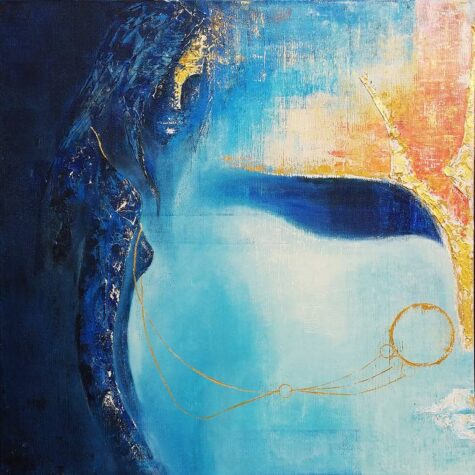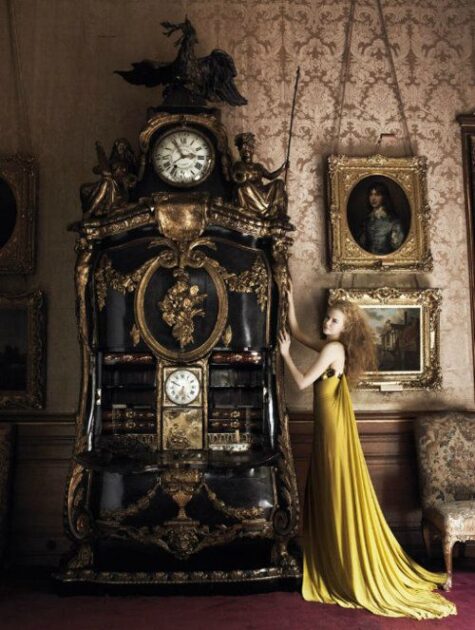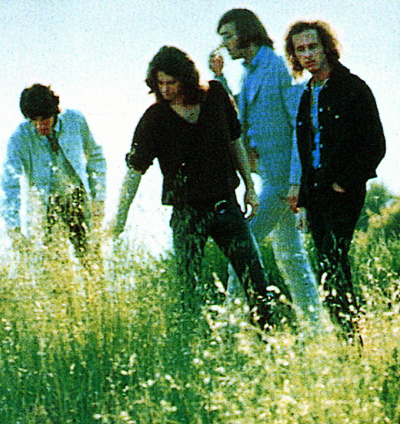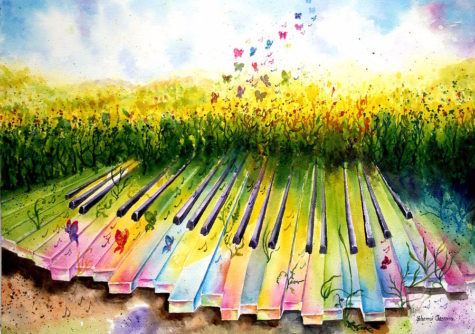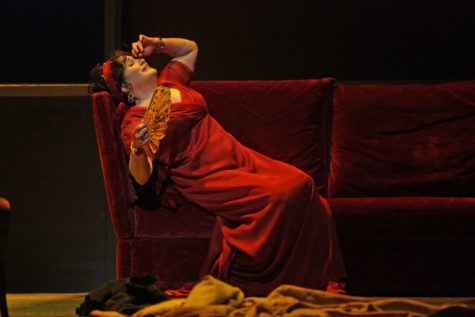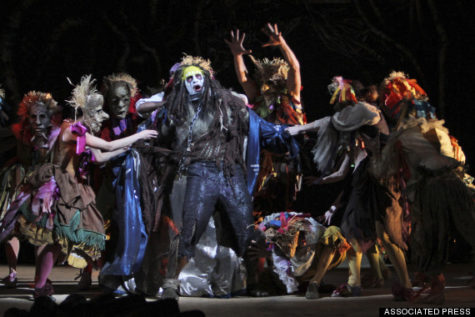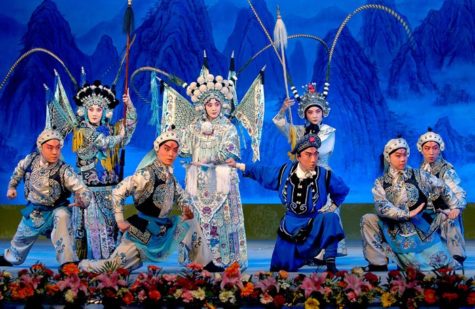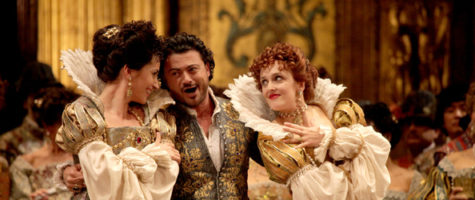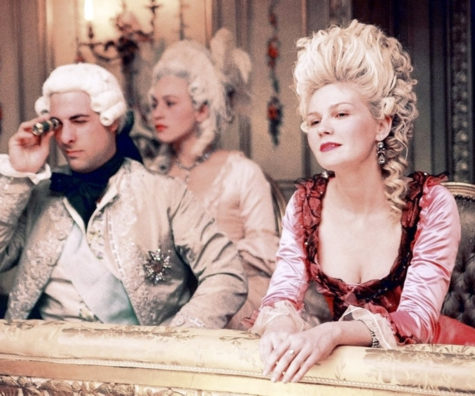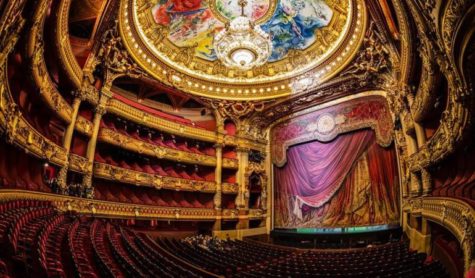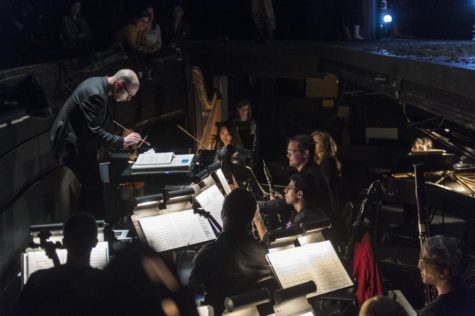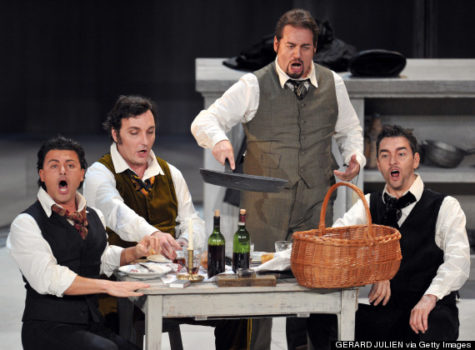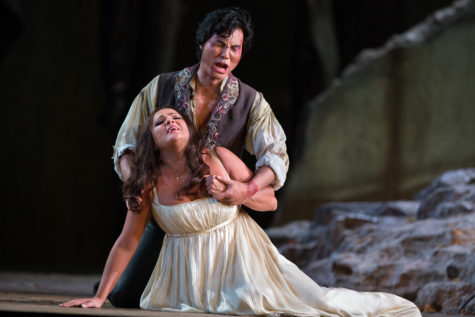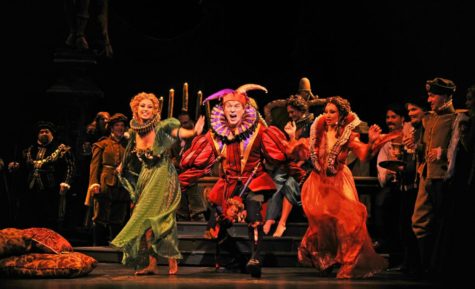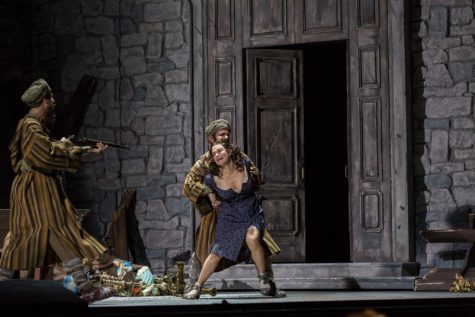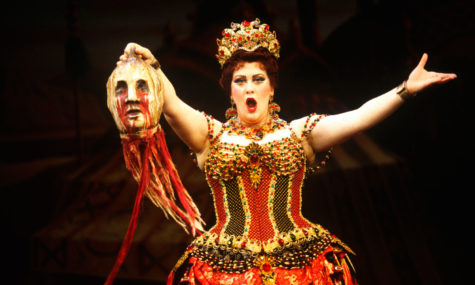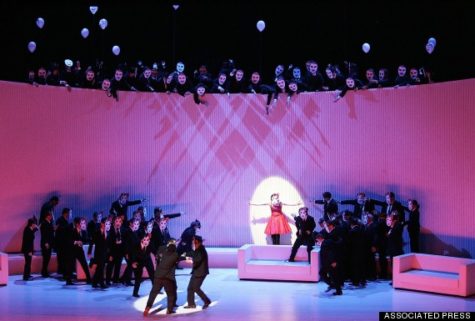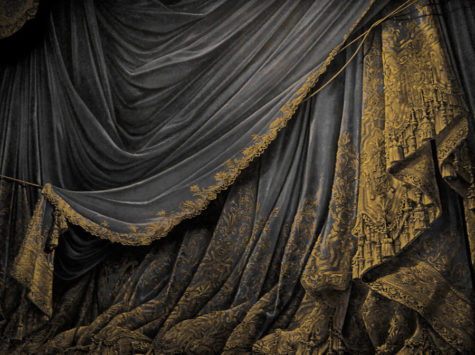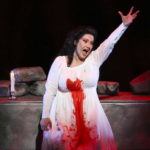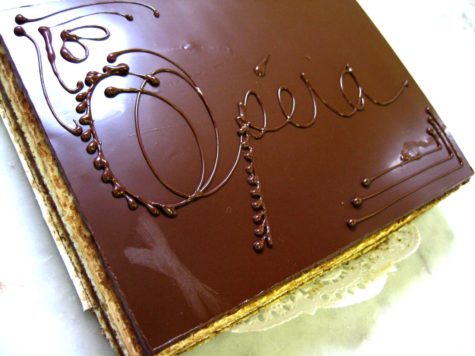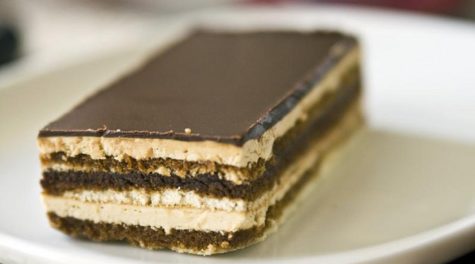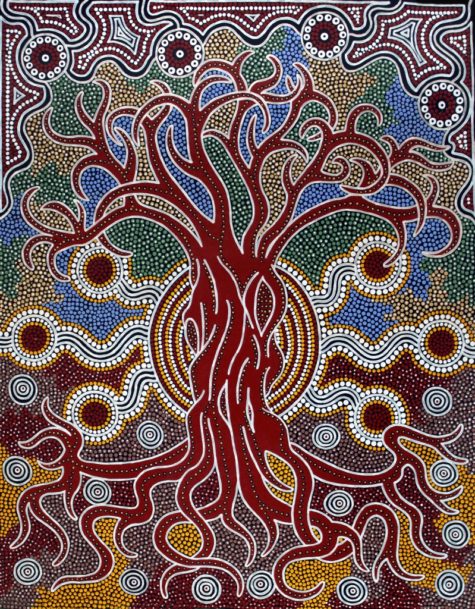Music
Joy – Shakti
Now that we have explored Shakti, I thought it might be nice to listen to some Shakti inspired music.
This is from the 1977 album “Shakti With John McLaughlin – A Handful Of Beauty.” If you want to check it out, here’s a link to the full album on YouTube.
Less Than Perfect
While researching for this project, I came across the lyrics to the song, “Less Than Perfect.” These are my favorite parts. It feels good, I think, to know I am not alone in my failure to be perfect.
Welcome to my silly life
Mistreated, misplaced, misunderstood
Miss knowing it’s all good
It didn’t slow me down
Mistaken
Always second guessing, Underestimated
Look, I’m still around…
You’re so mean
When you talk about yourself
You were wrong
Change the voices
In your head
Make them like you instead…
… we try try try
But we try too hard and it’s a waste of my time
Done looking for the critics, cause they’re everywhere
They don’t like my jeans, they don’t get my hair
Exchange ourselves, and we do it all the time
Why do we do that?
Why do we do that?
Don’t you ever ever feel
Like you’re less,
Less then perfect…
Like you’re nothing…
You’re perfect to me!
And after a little more searching I found this video, It has the song and lyrics. Enjoy!
Waiting For The Sun
I really love it when I have an excuse to post some music by The Doors! And since we are waiting for our “Here Comes The Sun” project to begin, I thought this would be appropriate.
Here are the lyrics:
At first flash of Eden
We race down to the sea
Standing there on freedom’s shore
Waiting for the sun
Waiting for the sun
Waiting for the sun
Can you feel it
Now that Spring has come
That it’s time to live in the scattered sun
Waiting for the sun
Waiting for the sun
Waiting for the sun.
Waiting for the sun
Waiting,, waiting,, waiting,, waiting, waiting,, waiting,, waiting,, waiting
Waiting for you to come along
Waiting for you to hear my song
Waiting for you to come along
Waiting for you to tell me what went wrong
This is the strangest life I’ve ever known
Can you feel it
Now that Spring has come
That it’s time to live in the scattered sun.
Waiting for the sun
Waiting for the sun
Waiting for the sun
Waiting for the sun
Music and lyrics by The Doors
Music For Success
Music is a powerful motivator, anchor and stimulant.
In a moment, think about a song that motivates you particularly, that has a bright energy which will help you work. Think of it, hum it or whistle it briefly so we know what we’re doing.
Now, make a list of ten songs that motivate you.
That’s the exercise for today!
Of course, you can make a “success playlist” for yourself, or sing, hum and whistle any of your favorites any time to give you an instant boost.
From:
- Dr Silvia Hartmann
- The 60 Second Wealth Creators
- Provided by www.DragonRising.com
What’s In A Name?
Names are important when it comes to invoking a God, and I’ve seen a lot of variation from website to website on Ganesh. Sometimes it’s Ganesh, other times it’s Ganesha, and then sometimes it’s Ganapati. So I decided to look it up, and this is what I found:
The word Ganesha comes from the Sanskrit words “Gana eeshaha, Ganeshaha”. Ganesha is the right term and Ganesh is a short form used to name a first born boy in the family of Hindus. Hence we can use both.
There is no difference between Ganesh and Ganapati.
- Gan + Ish = Ganesh : means Lord of People.
- Gan + Pati = Ganapati : means Lord of People.
Ganesh, by the way, has 1008 names. Here is a super cool recitation with music, it’s by Suresh Wadkar from the Album, Shree Ganesh Sahasranamavali.
A Bollywood Ganesh Song
How fun is this?
Let’s Go To The Opera
They say it isn’t over until the fat lady sings. And since our project is winding down, I thought it might be a good idea to go to the opera. Never been? No worries. From Huffington Post we have this great guide.
Your Definitive Guide To Going To The Opera
Opera can be a little intimidating.
Luca Pisaroni in The Enchanted Island
But underneath the grandeur (and layers of makeup), are poignantly human stories to the tune of beautiful music. Because opera is not a mainstream form of entertainment, it is often regarded as a pretentious one, something untouchable. However, if you give it a fighting chance, you’ll find that opera can be enjoyed by classical musicians and complete newcomers alike — old to young. Here’s our guide to making that happen:
Warrior Woman of Yang – China National Peking Opera Company
Picking An Opera
When deciding on an opera to see, think about what type of movie you like (or, what Netflix would suggest for you). Rom-com fan? Try “Don Pasquale.” Psychodrama? “Lucia di Lammermoor.” Bawdy humor? “The Marriage of Figaro.” More into big explosions and theatrics? You’re probably better off with some Wagner. Then there’s always the classic ABCs of opera: “Aida,” “La Boheme” and “Carmen.”
If you want to see an opera live, you have to look into what’s being performed at your local house (or movie theater). Then do a little research — even just the first sentence on a show’s Wikipedia page will help — on an opera’s plot and genre. Don’t research too far — you don’t want to spoil the ending, do you?
Opera tickets can run expensive, but there are usually cheaper options to be found — think about it like a Broadway show or a football game. Aside from standing room and top tier seats, look out for rush tickets and programs for students or seniors, as well as special promotions from places like Gilt. Programs vary at different opera houses.
What To Wear
No, men, you do not have to wear a tux. And unless you ladies plan on going to an extravagant ball later — or you rabidly enjoy dressing up — there’s no reason to whip out a long gown.
For men, slacks (or, if you’re in a pinch, a nice pair of jeans) and a button-down shirt will do. Jacket and tie optional. Please don’t wear your dirty gym sneakers.
For women, dress pants or a skirt and blouse work, as does a cocktail or work dress. Heels if you feel like it.
If you’re into dressing up, have fun with it and use it as an excuse to get creative. If not, don’t worry about it. Just wear something generally presentable and you’ll be fine. Oh, and probably layer up, you never know what the temperature will be like inside.
Before The Curtain Opens
You’ll probably want to eat something before you get there — operas feel extra long when you’re hungry. Ditto for getting a coffee and using the restroom before you take your seats.
The ushers are there to help. Don’t be embarrassed asking them to direct you to your seats. The ushers will also hand you a playbill. The playbill has information about the singers and conductor, which is usually pretty interesting if only to see all the different countries from which everyone hails.
The playbill also includes the synopsis, broken into acts, as well as information on intermission(s). Reading the synopsis will help you understand what’s happening in the upcoming act, but if you’re the kind of person who doesn’t like plot spoilers, tread carefully.
Check about fifty times that your phone is on silent — or, better yet, off.
Curtains Open
After the lights dim, if the audience starts mysteriously applauding, it’s because the conductor is walking out to his or her stand. You should always applaud for the conductor: they’re the one running the show, after all.
The right times to applaud can get confusing, especially depending on what you’re seeing. The easiest approach is to wait for someone else to start clapping, and then join along. A brief silence after singing doesn’t always mean it’s applause time.
Yes, most operas are sung in languages that are not English, and even English is hard to understand in operatic form. No, you do not have to know Italian/German/French/etc. to understand what’s going on. All opera performances will have some form of subtitles for every line. Sometimes it’s a projection to the sides or above the stage, and in other places it’s a screen on the seat in front of you. If it is a screen, make sure you hit the appropriate button for your subtitles to show up.
Intermission
Depending on the length of the opera, there could be an intermission or two. During intermission, get out of your seat and stretch out some. Wander around the opera house. They tend to have art and old opera artifacts and portraits hanging around, which are neat to see.
Stop by the bar and get a drink or snack, if you’d like. And don’t be embarrassed if you feel the need for a coffee — it’s better to drink a coffee during intermission than fall asleep during the performance.
There will be some indication — flickering lights, chimes — that the show is going to start soon, so head back to your seat.
Oh, The Drama
Opera can inspire a lot of emotions. As Kasper Holten, director of opera at the Royal Opera House in London, said, “In one evening, you go through in two and one-half hours what the rest of us spend our whole emotional lives living through.” What you see on stage may not look like real life, but it’ll feel like it.
Verdi’s Il Trovatore – Metropolitan Opera.
Our best recommendation is that if you feel yourself getting swept away, flow with it. Operas can be hysterically funny (even by modern standards), devastating, devastatingly gorgeous (musically or visually), sexy, thrilling, tense, poignant and — it happens — boring. If you don’t enjoy one opera, that doesn’t mean you should completely write all opera off. That would be like saying you didn’t like one TV show, so now you’re never going to watch TV again.
But if you do get caught up in it all, go on ahead. Cry, laugh, gasp and shout — we can assure you that you won’t be the only one doing so.
Just don’t throw tomatoes; we don’t do that anymore.
When It’s All Sung And Done
If you enjoyed what you saw, keep the momentum moving. Most young opera “aficionados” know so much about the opera thanks to nothing fancier than the internet. Check out videos of a certain aria or a certain singer on YouTube, find the snarkiest review of a show that you can, and get lost in singer gossip.
Here’s a cool example of what can be found on YouTube:
“It’s Diana Damrau with her most famous rendition of the Queen of the Night’s “Der Hölle Rache”, in HD. All hail to the Queen! I always wonder if the people in that room were aware they had just witnessed perfection.”
If you have a friend who’s super into opera, they would love answering any question you have and talking all about the art form. And of course you can always pick up books on the subject.
What is Opera?
From Opera Europa we have this great informational article that explaines opera.
- Opera, the art of emotions
Opera is a total art form which joins music, singing, drama, poetry, plastic arts and sometimes dance. In each work, all the components of opera combine their expressiveness and their beauty.
This complex alchemy makes an opera performance an extraordinary show, monopolizing the sight, hearing, imagination and sensibility of the audience, where all human passions are at work.
- The libretto
The libretto is the ‘script’ of an opera. It can be an original creation, sometimes written by famous poets or novelists (as Hugo von Hofmannsthal and Stefan Zweig for Richard Strauss’s works), but often it is an adaptation of plays (Shakespeare was a great source of inspiration for librettists), tales or novels. The subjects developed in libretto are various: forbidden love, infidelity, revenge, craving for power, war, ancient myths or historic events…
With such subjects, opera inhabits a universe where human passions explode. Love, Tragedy and Death are often at the heart of the plot. The characters, sometimes torn between their feelings and their duty, are confronted with extraordinary situations and are carried away by heightened feelings.
This excess burns them, leading them to commit acts of violence and sometimes to death. Love at first sight, sacrifice, enchantment, courage, suicide and murder appear together in the libretto. Some characters are punished for their crimes, other find redemption or are stricken with remorse… and sometimes there is a happy ending!
- The singing
Unlike most theatre, the text is sung by the artists in operas. The emotion and the intensity of singing have an impact on the weight and the meaning words.
There are different voices classified in six principal categories, from the more high-pitched to the lower: soprano, mezzo-soprano, contralto for women; and tenor, baritone and bass for men. Moreover, voices are characterized according to their power and agility: they can be light, lyric or dramatic. A light voice is not very powerful but can easily reach the high notes and vocalizes, unlike a dramatic voice which is powerful but less agile.
Voices are generally associated with types of roles. They emphasize some aspects of the characters like their personality or their nature. In Bizet’s Carmen, Carmen is a wild seductress who has experience of the world: so she is played by a mezzo soprano with a dark and warm voice. Gilda in Verdi’s Rigoletto is a lyric soprano: her clear and high-pitched voice symbolizes her purity, innocence and naivety.
- The music
Music expresses in another way the emotions and the action taking place on stage. In the mind of the camerata fiorentina(see ‘History’ page), whose researches and studies on Ancient Greek theatre led to the creation of the operatic genre, the music was at the service of the libretto: ‘Prima le parole, dopo la musica’ (‘The words first, the music after’). But this conception is questionable. It is an old and continuing debate: according to the eras, libretto and music have alternately claimed primacy.
Actually music does not only serve the libretto and the singing: it completes and exalts them by highlighting the intensity of situations and the characters’ passions and feelings.
By playing with rhythms, tones, melodies, nuances, the composers exploit the extraordinary suggestive power of the music in order to create particular atmospheres that lyrics or staging can not create. Some authors use recurrent musical motifs to represent a character, an emotion or a concept. In the prelude to Das Rheingold, Wagner manages to relate the Rhine’s birth.
The opera begins with a unique triad which slowly emerges from silence and resonates in infinite depths: the Rhine comes out of original chaos. Little by little motifs add to this triad until creating a melody: first brass instruments, majestic, then strings, more ethereal, like sparkling waves on the river’s surface. The more the orchestra becomes animated and enriches the prelude, the faster the motifs become as the more the Rhine swells and stirs, until foaming.
Music is beyond words. It addresses directly the audience’s heart and appeals to its sensibility and imagination. Here’s a link to a video with the opening music. It starts off with silence, so you have to wait for it.
The staging
Before the 20th century, the theatrical dimension was marginalized: in the 17th century, opera productions were quite static and looked like a costumed concert. The staging became important when the programming of opera houses became more focused on an existing repertory than on new creation. Moreover, during the 20th century, the importance of singing and dramatic gifts began to be considered as equal.
But opera stages have always be an extraordinary place, with spectacular visual effects and big machinery. The possibilities of staging have benefited from technical progress, and now special effects, digital technology and image projections are used in many productions.
“La Traviata” von Giuseppe Verdi
A staging is not a simple illustration of a work: it carries a concept or meaning. The director proposes a view of an opera. This view may be close to the libretto and the author’s conceptions or a more personal interpretation of the work. Some directors transpose the action to another era, in another situation or in a timeless and immaterial context.
These transpositions bring out certain dimensions of the works and enrich their significance by disclosing some of their unknown aspects. For example, in a modern production, the themes developed in a baroque opera can be revealed as very actual. These perspectives adopted by directors change the way that audience sees and understands the works. Opera recreates and reinvents itself constantly.
Before the rise of the curtain, nobody knows what will happen on the stage. That is what makes opera so exciting.
Still Not Convinced?
Here is a small collection of scenes from various operas. They certainly tweaked my interest:
So now that we know a little bit about the opera, let’s have cake!
Make An Opera Cake
From The Splendid Table
It is hard to say exactly who invented the Opera Cake. Some sources claim there was a type of Opera Cake sold in Paris as long ago as 1890, and some think the Parisian specialty was created closer to 1950. But the point about which there is no controversy is the only important point: The greatest Opera Cake is made at Dalloyau. There, executive pastry chef Pascal Niau makes a cake as sleek and smooth as an opera stage and as gloriously delicious as La Boheme is affectingly beautiful.
The classic Opera Cake is a work in six acts. There are three thin layers of almond cake, each soaked in a potent coffee syrup; a layer of espresso-flavored buttercream; one layer of bittersweet chocolate ganache; and a topping of chocolate glaze.
Traditionally, the cake is decorated with its name written in glaze across the top and finished with a piece of shimmering gold leaf. It is obviously a rich cake, but it is surprisingly not a filling cake, and I’m convinced this is because Maestro Niau has orchestrated the cake’s elements so perfectly.
- A note on size:
This recipe makes a square Opera Cake that is a festive – and impressive – 10 inches (25 cm) on a side. If this is more cake than you need, don’t cut down the recipe – you won’t be successful with some of the cake’s components, particularly the buttercream, if you reduce the quantities. Instead, make the full cake, cut it into smaller size cakes and stock them in your freezer.
Ingredients
The cake:
- 6 large egg whites, at room temperature
- 2 tablespoons (30 grams) granulated sugar
- 2 cups (225 grams) ground blanched almonds
- 2 1/4 cups (225 grams) confectioners sugar, sifted
- 6 large eggs
- 1/2 cup (70 grams) all-purpose flour
- 3 tablespoons (45 grams) unsalted butter, melted and cooled briefly
The coffee syrup:
- 1/2 cup water
- 1/3 cup sugar
- 1 1/2 tablespoons (7 grams) instant espresso or coffee
The coffee buttercream:
- 2 tablespoons (10 grams) instant espresso or coffee
- 2 tablespoons (15 grams) boiling water
- 1 cup (100 grams) sugar
- 1/4 cup (30 grams) water
- Pulp of 1/4 vanilla bean
- 1 large whole egg
- 1 large egg yolk
- 1 3/4 sticks (7 ounces; 200 grams) unsalted butter, at room temperature
The chocolate ganache:
- 8 ounces (240 grams) bittersweet chocolate, finely chopped
- 1/2 cup (125 grams) whole milk
- 1/4 cup (30 grams) heavy cream
- 4 tablespoons (2 ounces; 60 grams) unsalted butter, at room temperature
The chocolate glaze:
- 5 ounces (150 grams) bittersweet chocolate, finely chopped
- 1 stick (115 grams) unsalted butter
Instructions
1. To make the cake: Position the racks to divide the oven into thirds and preheat the oven to 425 degrees F (220 degrees C). Line two 12 1/2-x15 1/2-inch (31-x-39-cm) jelly-roll pans with parchment paper and brush with melted butter. (This is in addition to the quantity in the ingredient list.)
2. Working in a clean dry mixer bowl fitted with the whisk attachment, beat the egg whites until they form soft peaks. Add the granulated sugar and beat until the peaks are stiff and glossy. If you do not have another mixer bowl, gently scrape the whites into another bowl.
3. In a mixer fitted with the paddle attachment, beat the almonds, confectioners sugar and whole eggs on medium speed until light and voluminous, about 3 minutes. Add the flour and beat on low speed only until it disappears.
Using a rubber spatula, gently fold the meringue into the almond mixture, then fold in the melted butter. Divide the batter between the pans and spread it evenly to cover the entire surface of each pan.
4. Bake the cakes for 5 to 7 minutes, or until they are lightly browned and just springy to the touch. Put the pans on a heatproof counter, cover each with a sheet of parchment or wax paper, turn the cakes over and unmold.
Carefully peel away the parchment, turn the parchment over and use it to cover the exposed sides of the cakes. Let the cakes come to room temperature between the parchment or wax paper sheets. (The cakes can be made up to 1 day ahead, wrapped and kept at room temperature.)
5. To make the syrup: Stir everything together in a small saucepan and bring to the boil. Cool. (The syrup can be covered and refrigerated for up to 1 week.)
6. To make the buttercream: Make a coffee extract by dissolving the instant espresso in the boiling water; set aside.
7. Bring the sugar, water and vanilla bean pulp to a boil in a small saucepan; stir just until the sugar dissolves. Continue to cook without stirring until the syrup reaches 255 degrees F (124 degrees C), as measured on a candy or instant-read thermometer. Pull the pan from the heat.
8. While the sugar is heating, put the egg and the yolk in the bowl of a mixer fitted with the whisk attachment and beat until the eggs are pale and foamy. When the sugar is at temperature, reduce the mixer speed to low and slowly pour in the syrup.
Inevitably, some syrup will spin onto the sides of the bowl – don’t try to stir the spatters into the eggs. Raise the speed to medium-high and continue to beat until the eggs are thick, satiny and room temperature, about 5 minutes.
9. Working with a rubber spatula, beat the butter until it is soft and creamy but not oily. With the mixer on medium speed, steadily add the butter in 2-tablespoon (30-gram) chunks. When all the butter has been added, raise the speed to high and beat until the buttercream is thickened and satiny.
Beat in the coffee extract. Chill the buttercream, stirring frequently, until it is firm enough to be spread and stay where it is spread when topped with a layer of cake, about 20 minutes. (The buttercream can be packed airtight and refrigerated for 4 days or frozen for 1 month; before using, bring it to room temperature, then beat to smooth it.)
10. To make the ganache: Put the chocolate in a medium bowl and keep it close at hand. Bring the milk and cream to a full boil, pour it over the chocolate, wait 1 minute, then stir gently until the ganache is smooth and glossy.
11. Beat the butter until it is smooth and creamy, then stir it into the ganache in 2 to 3 additions. Refrigerate the ganache, stirring every 5 minutes, until it thickens and is spreadable, about 20 minutes. (The ganache can be packed airtight and refrigerated for up to 3 days or frozen for 1 month; bring to room temperature before using.)
12. To assemble the cake: Line a baking sheet with parchment or wax paper. Working with one sheet of cake at a time, trim the cake so that you have two pieces: one 10-x-10-inches (25-x-25-cm) square and one 10-x-5-inches (25-x-12.5-cm) rectangle. Place one square of cake on the parchment and moisten the layer with coffee syrup.
Spread about three-quarters of the coffee buttercream evenly over the cake. (If the buttercream is soft, put the cake in the freezer for about 10 minutes before proceeding.) Top with the two rectangular pieces of cake, placing them side by side to form a square; moisten with syrup.
Spread the ganache over the surface, top with the last cake layer, moisten, then chill the cake in the freezer for about 10 minutes. Cover the top of the cake with a thin layer of coffee buttercream. (This is to smooth the top and ready it for the glaze – so go easy.)
Refrigerate the cake for at least 1 hour or for up to 6 hours; it should be cold when you pour over the glaze. If you’re in a hurry, pop the cake into the freezer for about 20 minutes, then continue.
13. To glaze the cake: Bring the butter to a boil in a small saucepan. Remove the pan from the heat and clarify the butter by spooning off the top foam and pouring the clear yellow butter into a small bowl; discard the milky residue.
Melt the chocolate in a bowl over—not touching—simmering water, then stir in the clarified butter. Lift the chilled cake off the parchment-lined pan and place it on a rack. Put the rack over the parchment-lined pan and pour over the glaze, using a long offset spatula to help smooth it evenly across the top.
Slide the cake into the refrigerator to set the glaze and chill the cake, which should be served slightly chilled. At serving time, use a long thin knife, dipped in hot water and wiped dry, to carefully trim the sides of the cake so that the drips of glaze are removed and the layers revealed.
- Tips and tricks
Each element of the cake can be made ahead, as can the assembled cake. The cake can be kept in the refrigerator, away from foods with strong odors, for 1 day, or you can freeze the cake, wrap it airtight once it is frozen, and keep it frozen for 1 month; defrost, still wrapped, overnight in the refrigerator.
An American in Paris, I rarely play around with this classic, but when I do, it’s to add a little crunch to the mix by pressing toasted sliced almonds onto both the buttercream and the ganache.
From The Splendid Table
The Trust Fund of Blessings
This is a nice little talk about The Trust Fund of Blessings, along with some didgeridoo and vibrational healing. I did not transcribe this video, so if we want to know about the Trust Fun of Blessings, we’ll have to listen to the talk. 🙂
Audio Only:
Here is an audio only version of the video for those of us who prefer to simply listen:
Sources and Links:
- His website: Astarius.com
- YouTube channel: Astarius Miraculii
- Facebook page: Astarius Miraculii
Song of Success
Success is experienced when we have gratitude for the inner and outer accomplishments of our life. It does not matter how much or how little we achieve, if we don’t “jump for joy” about it, we won’t feel the “emotional mileage”. Success happens externally but can only register internally through self validation. MAXIMIZE the minimum and the minimum becomes the MAXIMUM”!
~Astarius Miraculii
If you would prefer to watch it on YouTube, this is a direct link: Song of Success. And for those of us who prefer to just listen, here is an audio only version:
Sources and Links:
- His website: Astarius.com
- YouTube channel: Astarius Miraculii
- Facebook page: Astarius Miraculii
Abundance Formula Part 1
It’s day one of our new project, and here is part one of the Abundance Formula. I thought it would be nice, since it is the first day of the project to listen to the Didgeridoo healing, toning, and wisdom teachings of Astarius. Part 2 will post tomorrow along with the money chant.
Here is an audio only version in case your device or your bandwidth limits your video watching abilities:
If you just want to cut to the chase and get on with just the chants, you can bypass this video and find the Astarius Chant MP3’s widget in the side bar. All the chants are already uploaded and listed. You can pick one and listen to it. Explore until you find one you really like.
Links:
- His website: Astarius.com
- YouTube channel: Astarius Miraculii
- Facebook page: Astarius Miraculii
- Radical Self Care Project Overview by shirleytwofeathers - No Comment
- Radical Self Care Image Gallery by shirleytwofeathers - No Comment
- It’s A Wrap by shirleytwofeathers - 3 Comments
- Something To Consider by shirleytwofeathers - 1 Comment
- Nurturing Your Precious Self by shirleytwofeathers - 3 Comments
me: Make Your Own Violet Fire
Abdulrahman: Money Chant – Very Fast
Shirley Twofeathers: It’s A Wrap
Daniel Knirs: It’s A Wrap
Shirley Twofeathers: It’s A Wrap
